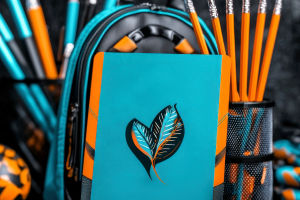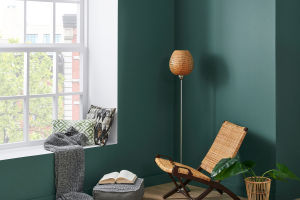
During the parent meeting, the teacher was very thorough, providing a list of everything that needed to be prepared.
I took note of her list, then added a few personal insights to share with the other parents for reference.
1. Supplies for Learning
As per the teacher's request, we need to prepare various notebooks: vocabulary notebooks, pinyin books, and both single and double-lined notebooks in different quantities (the exact amount will be specified by the teacher).
2. Book and Notebook Covers
Prepare a number of book and notebook covers. In the market, you'll find both paper and transparent plastic covers in various sizes. Most of the kids' books come in two sizes: one is similar to the size of a large magazine, and the other matches the size of their homework books. We only need to buy 10 sheets of each type (paper and plastic) in these two sizes, totaling 40 sheets.
3. Name Tags
Buy about 10 sheets of self-adhesive label paper. These labels are common in stores, and each sheet is the size of a notebook, divided into small squares. The labels have red or blue borders with a blank center for writing your child's name. My tip: At the beginning of the school year, I stuck these labels on all of our daughter's school supplies—pencil case, ruler, pencils, etc. This small detail saved us from many unnecessary disputes over similar-looking items.
4. Pencils
Prepare about 30 2H pencils (the teacher recommended 2H over HB). At the beginning of the school year, kids often don't press down hard enough when writing, so HB pencils can leave dark marks that are difficult to erase and may tear up the homework book. The 2H pencils produce lighter marks that are easier to correct. After three months of school, these 30 pencils should be used up, and you can start buying HB pencils in bulk. It's also common for kids to lose pencils, especially in the first few months, so don't worry about it. Teachers often find pencils lying around the classroom, with no one claiming them. Over time, this issue naturally reduces.
5. Erasers
Don't buy hard drawing erasers. Instead, opt for soft, fragrant erasers, as they are gentler on homework books and don't cause tears. These are daily consumables, so it's worth buying a bulk pack at a wholesale market.
6. Ruler
Prepare a 15 cm small straight ruler. This ruler should have one straight edge and one wavy edge. In the second semester of the first grade, the Chinese teacher starts training kids to underline words in reading comprehension tasks. The wavy edge helps children draw neat, organized lines.
7. Pencil Sharpeners
You don't need to buy an electric or fancy pencil sharpener. At this stage, kids haven't mastered how to use sharpeners properly, and using a complicated one might create more mess than it's worth. I initially bought five small, office-grade sharpeners. But a word of caution: sharpening 30 pencils at once with these basic models requires quite a bit of effort, so my husband usually takes on this task.
8. Pencil Case
Don't buy metal pencil cases. The teacher advised against them because the kids' desks are small, and metal pencil cases tend to make loud crashing noises when they fall on the floor. This can happen several times a lesson, distracting everyone. I started by buying a plastic pencil case for our daughter but eventually switched to a soft pencil pouch. These are lightweight and quiet when they fall.
9. Writing Mat
A writing mat, used by parents in the past, is not necessary. The teacher suggested using hard cardboard instead of a plastic writing mat. I used the cardboard from a shirt packaging, which I cut into a suitable size. It's sturdier and won't cause the paper to slide around, making it easier for our daughter to write.
10. Backpack
When buying a backpack, it's best to bring your child along. The size and strap width vary between backpacks for younger and older students. Choose a lightweight backpack with high-quality zippers. The zippers must be double-sided for durability, as your child will open and close them countless times throughout the day. It's also important to have a comfortable fit, so make sure the straps aren't too narrow.
When deciding on a rolling backpack, consider whether the child's school has stairs. If there are stairs to climb, the rolling backpack could become cumbersome, requiring the child to lift it manually. I decided to go for a regular backpack for our daughter, which worked well for her.
11. Water Bottle
Since our daughter started school in the autumn, I made sure she had a water bottle, as it can be easy for young children to forget to drink water on their own. I avoided the school's water dispenser to ensure she was drinking fresh water. If your child doesn't like plain water, consider preparing a sweet drink like pear water or a cooling herbal tea to encourage them to drink more.
12. Lunch Box and Utensils
For children who stay at school for lunch, consider getting a good-quality lunch box, utensils, and a small tablecloth. The tablecloth is handy to avoid spilling food on the desk, keeping things neat. I bought a simple white cloth that's easy to clean, along with a plastic lunch box that won't burn the child. Some lunch boxes even come with a compartment for chopsticks or a spoon.
13. Wet and Dry Wipes
I bought small packs of wet and dry wipes for our daughter to use at school. They come in handy after eating or for quick hand washing.
14. Art Supplies
In first grade, the kids will have art classes. It's better not to buy large art supplies that take up too much space on the desk. Instead, opt for a small box of 24 colored pencils or markers, which is just the right size and easy for kids to use.
By preparing all these items, we are helping our children ease into their first year of primary school. It's a big step, and these thoughtful preparations will make a world of difference.


